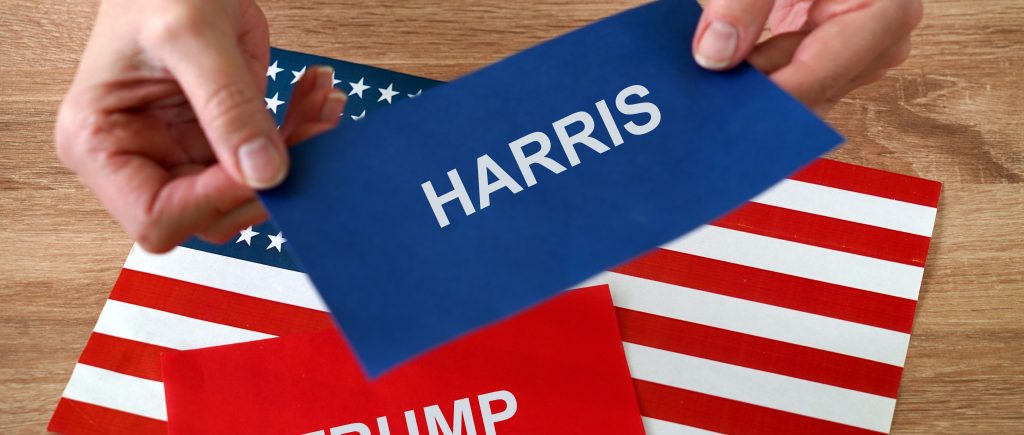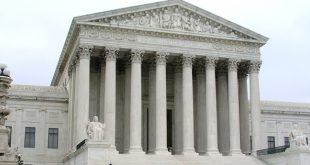The presidential election results will begin to come in on Tuesday night after polls close throughout the country. However, in many key states, it may take a while to know who has won and much longer to get official, certified results. There are several reasons for this delay, including the rise of mail-in voting, which was taken by nearly one-third of voters nationwide during the 2022 midterm elections. Some states allow mail-in ballots to be counted before Election Day, while others do not allow poll workers to start counting those ballots until in-person voting has come to an end.
Americans are heading to the polls to vote for their next president. Vice President Kamala Harris and former President Donald Trump each need at least 270 electoral votes to win. The battleground states of Arizona, Georgia, Michigan, Nevada, North Carolina, Pennsylvania and Wisconsin are expected to be pivotal to the path to victory.
Harris and Trump tied with three votes each in the tiny New Hampshire community of Dixville Notch, which opened and closed its poll just after midnight ET in a decades-old tradition.
Seven states are considered battleground states in the 2024 presidential election. Here’s a breakdown of those states’ rules around official ballot counts and certification.
Arizona has allowed voting by mail for over two decades, and approximately 80% of voters in the state vote by mail. Ballot processing and tallying in the state can begin when the ballots are received by election workers, but results may not be released before all precincts have reported or one hour after the polls close on Election Day, whichever is sooner. Releasing information earlier is a felony in Arizona.
County elections officials are responsible for the counting of ballots in federal, state, and county elections. Early and provisional ballots first undergo signature verification at a county recorder’s office, and counties can begin tabulating votes once early voting has begun. Most early ballots will be counted before Election Day, while those that are received on Election Day will be tabulated in the days immediately afterward.
An automatic recount is triggered if the margin of the votes between two candidates is 0.5 percentage points or fewer. Recounts may not be requested in Arizona. Since 2020, the state has been the epicenter of a campaign among Trump supporters to undermine trust in the nation’s election systems, leading elections officials in the state’s largest county to erect a veritable fortress to defend the center where votes are counted.
Georgia law requires that the vote be certified “not later than 5:00 P.M. on the Monday following” the election, but since this year that Monday falls on Nov. 11, Veterans Day, that deadline has been moved to the following day, Tuesday, Nov. 12. The deadline for either candidate to request a recount is two days later, Thursday, Nov. 14. In Georgia, a losing candidate may petition for a recount when results are within 0.5% of total votes cast for the office.
In Michigan, the last polls close at 9 p.m. ET. About 42% of Michigan voters in 2022, 1.9 million, cast absentee ballots, down from 59% in the 2020 presidential election. The state’s decentralized nature, with 1,600 different local clerks running the elections, makes it difficult to predict when the state’s winner will be apparent.
Nevada, one of eight states to conduct all-mail elections, begins in 2022, and the state’s board of county commissioners is required to complete county-level canvasses by Nov. 15, which is 10 days after the election.
The US presidential election is set to take place on November 18, with either candidate having the right to demand a recount by November 18. This recount must begin within a day and be completed within five days, as the secretary of state is required to meet with Nevada’s Supreme Court justices to conduct a statewide canvass. The governor then certifies the election.
North Carolina’s polls close at 7:30 p.m. ET, and the state’s election board is required to meet on November 15 to complete their canvases. If no protests are made to the results, the board must issue a certification of the election six days later. A mandatory recount is triggered if the two candidates are separated by less than half a percent, and one of the candidates formally requests to have the votes counted again. That request must be made by noon on November 17, two days after the county-level canvass.
In Pennsylvania, counties cannot begin counting mail-in and absentee ballots until 7 a.m. on Election Day. Full returns are processed beginning at 9 a.m. on the third day after the election, or November 8 this year. Pennsylvania’s Supreme Court issued an order expediting election-related cases in August, shortened the window in which a lower court decision can be appealed from 10 days to three.
The vast majority of ballots will be counted relatively quickly, with most vote reports from many counties quite quickly after polls close. However, if the race is as close as expected, it could hinge on votes that are slower to tally. Provisional ballots typically are reported out in smaller counties on Thursday through Monday in larger counties. A recount and recanvass is automatically triggered in the state if the unofficial election returns show the candidates separated by less than 0.5%. The recount would be required to be completed by November 26.
Polls close in Wisconsin at 8 p.m. CT (9 p.m. ET). Most town and city clerks in Wisconsin are required to deliver tallies to their county clerks by 4 p.m. the day after the election, or by 4 p.m. the next day if the municipality uses a municipal board of absentee ballot canvassers. A county board of canvassers has until Nov. 19 to deliver certified vote statements to the Wisconsin Elections Commission. After the final county is delivered its results to the commission, a candidate can seek a recount if the race is within 1%.

 Noor Trends News, Technical Analysis, Educational Tools and Recommendations
Noor Trends News, Technical Analysis, Educational Tools and Recommendations




